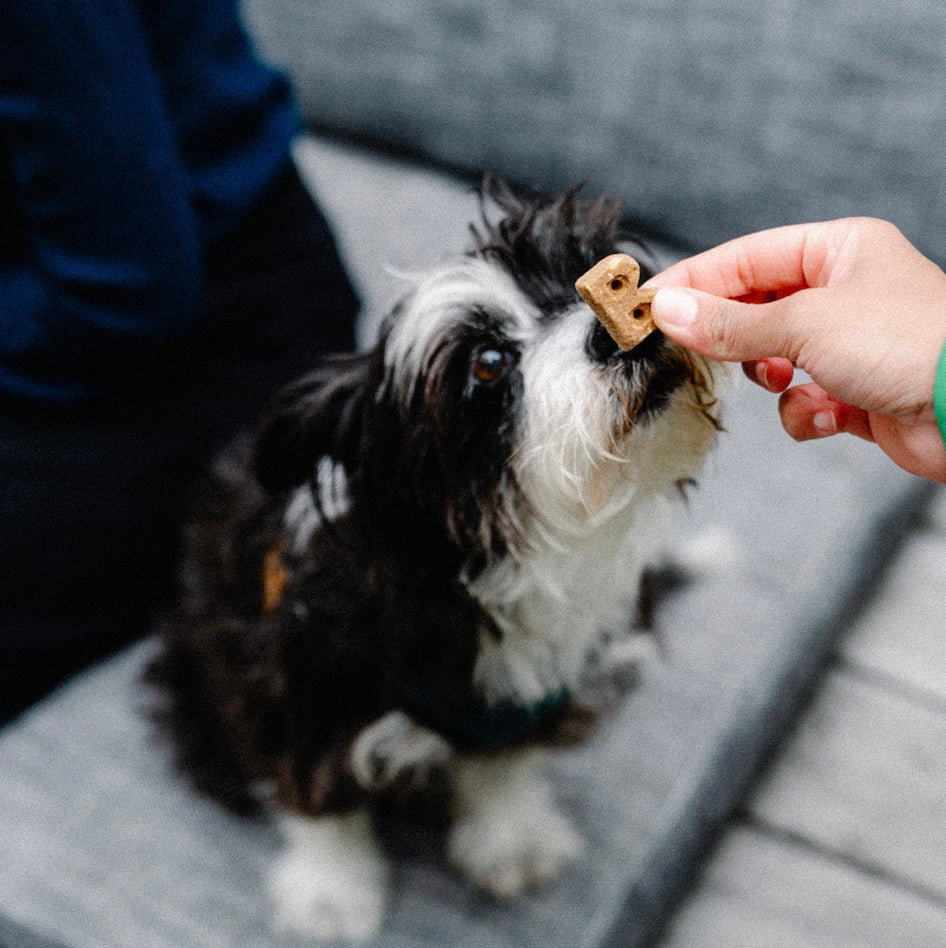
Dog trainers are always hearing a string of behavioral concerns from pet parents: What can I tell my dog or teach my dog to get him to stop jumping? What most people don’t realize is that there’s a great training tactic that requires little work from pet parents and encourages dogs to be well-behaved of their own volition!
Capturing- the Trainer's Secret for Better Behavior
Capturing is a training technique where, instead of trying to teach your dog to do something new, you reward your dog for something he already does naturally. Psychologist Dr. Stanley Coren likes to call this autotraining, because “the dog seems to be training himself.” This is in contrast to shaping and luring, the other primary techniques of training, which involve much more active participation on the pet parent’s part.
You may have already taught your dog a strong behavior through capturing without even knowing it! It’s easy to not notice when our dogs are being good, but when they’re doing something we don’t like, like jumping up on us or guests, we notice. It’s not uncommon for pet parents to accidentally reward a behavior like jumping even if they’re trying to punish it. If a dog is ignored when you come home but, when he jumps up, you interact with him to get him back on the ground - SCORE! - the dog got the reward (your attention) that he was looking for, even if the interaction wasn’t exactly positive.
What Does Your Dog Already do?
The internet often tells us that THIS (whatever this may be) is what you need to teach to get your dog to behave in a certain situation, like teaching a dog to sit when greeting people. After all, if a dog is sitting, they can’t be jumping! Right?
Right! “Not jumping” isn’t very clear and leaves room for lots of other behaviors you might not like, but “sitting” is pretty unambiguous. The dog knows exactly what it’s supposed to do to get the reward, so that should be an easy win. Depending on the circumstances though, “sit” can seem near impossible.
Asking a squirmy, excited dog to sit in a situation where they used to bounce off the walls is a lot to ask. It’s unlikely that this dog has ever offered to sit while someone approached to pet him without some training. We could teach him to do this, but if the reason why you want to teach this is to avoid the dog from jumping, there are other, easier options.
There is one thing that every dog is REALLY good at, no matter how jumpy they are - having all of their paws on the ground. By capturing the dog having all their paws on the ground with treats or your attention, the dog doesn’t need to jump.
How To Make That Behavior Happen More Frequently
Changing behavior through capturing is simple, but when excitement is high, such as when visitors come over, it isn’t always easy. For the fastest results, you need to be able to catch the dog before the undesirable behavior happens.
Dogs can be pretty speedy, and a lot can happen between starting to reach for a treat and getting the treat to the dog’s mouth. A marker like a verbal “yes!” or a click from a clicker can show your dog that what he was doing at that moment is why the treat is coming.
As your dog learns that they don’t have to jump to get the attention they’re looking for, that something else they’ve already been doing works just as well, the jumping will happen less and less.
Do You Need to Add a Word?
When training through capturing, you typically reward a behavior when it happens naturally, then pair a word with that behavior. In the jumping scenario, you could reward your dog for all paws on the ground, and as the dog begins standing more frequently and jumping less frequently, you could say “stand” as your dog is standing, then reward. Once he has some experience with that word, if you start to see him jumping, you could say “stand” to remind him what you want him to be doing and interrupt him from jumping.
You can get a strong, lasting behavior through capturing without ever adding a word. If your dog mostly jumps when someone walks in the door and you don’t need him to respond to “stand” elsewhere, you can have the environment tell your dog what to do.
A word that a dog responds to is a verbal cue. When a dog responds to the environment, like sitting when reaching a curb, it’s an environmental cue. If you always want your dog to keep all paws on the floor when someone comes into the door, opening the door can be the cue!
Now THAT’S what we call autotraining!
If you’ve been struggling with your pup’s behavior, professionals can help! Thanks to the boom in virtual learning, you are no longer limited to the trainers in your area. It’s easier than ever to work with a qualified trainer, behavior consultant, or veterinary behaviorist to improve your life with your dog. For instance, Doggo Insurance has a value-added benefit of certified professional dog trainers who can text or video call to train throughout the week!



